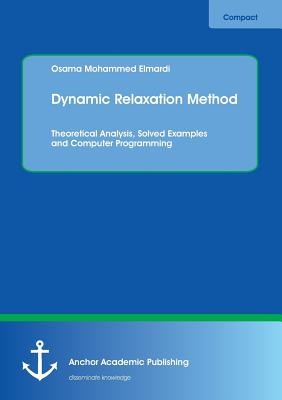
- We will send in 10–14 business days.
- Author: Osama Mohammed Elmardi
- Publisher: Anchor Academic Publishing
- ISBN-10: 3960670842
- ISBN-13: 9783960670841
- Format: 14.8 x 21 x 0.3 cm, softcover
- Language: English
- SAVE -10% with code: EXTRA
Dynamic Relaxation Method. Theoretical Analysis, Solved Examples and Computer Programming (e-book) (used book) | bookbook.eu
Reviews
Description
This book is suitable as a textbook for a first course on Dynamic Relaxation technique in civil and mechanical engineering curricula. It can be used as a reference by engineers and scientists working in the industrial sector and in academic institutions. The first chapter includes an introduction to the Dynamic Relaxation method (DR) which is combined with the Finite Differences method (FD) for the sake of solving ordinary and partial differential equations, as a single equation or as a group of differential equations. In this chapter the dynamic relaxation equations are transformed to artificial dynamic space by adding damping and inertia effects. These are then expressed in finite difference form and the solution is obtained through iterations. In the second chapter the procedural steps in solving differential equations using the DR method were applied to the system of differential equations (i.e. ordinary and/or partial differential equations). The DR program performs the following operations: Reads data file; computes fictitious densities; computes velocities and displacements; checks stability of numerical computations; checks convergence of solution; and checks wrong convergence. At the end of this chapter the Dynamic Relaxation numerical method coupled with the Finite Differences discretization technique is used to solve nonlinear ordinary and partial differential equations. Subsequently, a FORTRAN program is developed to generate the numerical results as analytical and/or exact solutions.
EXTRA 10 % discount with code: EXTRA
The promotion ends in 20d.14:40:43
The discount code is valid when purchasing from 10 €. Discounts do not stack.
- Author: Osama Mohammed Elmardi
- Publisher: Anchor Academic Publishing
- ISBN-10: 3960670842
- ISBN-13: 9783960670841
- Format: 14.8 x 21 x 0.3 cm, softcover
- Language: English English
This book is suitable as a textbook for a first course on Dynamic Relaxation technique in civil and mechanical engineering curricula. It can be used as a reference by engineers and scientists working in the industrial sector and in academic institutions. The first chapter includes an introduction to the Dynamic Relaxation method (DR) which is combined with the Finite Differences method (FD) for the sake of solving ordinary and partial differential equations, as a single equation or as a group of differential equations. In this chapter the dynamic relaxation equations are transformed to artificial dynamic space by adding damping and inertia effects. These are then expressed in finite difference form and the solution is obtained through iterations. In the second chapter the procedural steps in solving differential equations using the DR method were applied to the system of differential equations (i.e. ordinary and/or partial differential equations). The DR program performs the following operations: Reads data file; computes fictitious densities; computes velocities and displacements; checks stability of numerical computations; checks convergence of solution; and checks wrong convergence. At the end of this chapter the Dynamic Relaxation numerical method coupled with the Finite Differences discretization technique is used to solve nonlinear ordinary and partial differential equations. Subsequently, a FORTRAN program is developed to generate the numerical results as analytical and/or exact solutions.


Reviews